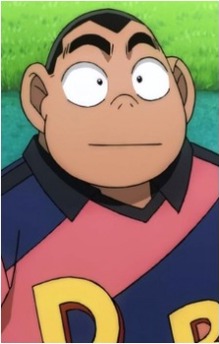Anime







































Kojima Genta is a student in Teitan Elementary when Shinichi joins his class as Edogawa Conan. Shortly afterwards, he and his classmate Ayumi decide to investigate an apparently haunted mansion, and they persuade Conan to come along. When their friend and classmate Mitsuhiko expresses his skepticism about supernatural hauntings, Genta forcefully ‘persuades’ him to tag along as well. As it turns out, the haunting is a cover-up for an old homicide case.
Soon after, the accidental acquisition of a treasure map leads Ayumi, Genta, Mistuhiko and Conan on a hunt for a cache of stolen Italian gold coins, during which Conan saves them from getting killed by the mafia members who are also after the gold. After the case is resolved, Mitsuhiko joins Genta and Ayumi in forming the nucleus of an amateur detective group, the Detective Boys. Genta is quick to pronounce himself the leader of the group, but his lackadaisical leadership abilities are commonly neglected in the field, and in fact everyone (even Genta) unconsciously views Conan as the group’s actual leader. Genta’s school shoe locker is used as a mailbox for any of their fellow students to present them with a case to solve.
Genta loves food, especially unagi, and can eat more than all the other Detective Boys members combined. When discussions of money come up, Genta tends to think about it in terms of how many unagi bowls he could buy. He also tends to mess up certain Japanese terms with similar-sounding words (especially if the latter are related to food) and sometimes has trouble reading even the most common Kanji, which on occasion causes some ridicule from his classmates and friends. His brash personality, lack of awareness of his surroundings, and tendency to not think before acting often lands the Detective Boys (or at least himself) in sticky situations.
Even though he is brash, outspoken and can be intimidating, Genta is actually very kind and dependable. He is a good friend of Ayumi and Mitsuhiko, and has been shown to greatly admire his father, who is considered to be a classic “Child of Edo”.
